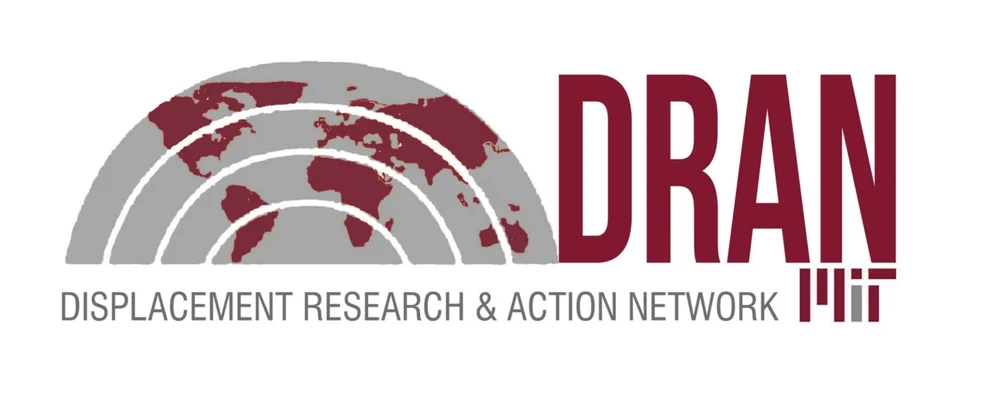This blog was originally published by the International Institute for Environment and Development on www.iied.org
With over half the world's refugees, such as these in Thailand, now living in large towns and cities where they are confronted by a unique set of challenges, the traditional image of life in tented, sprawling camps no longer tells the full refugee story (Photo: Andrew McConnell/Panos Pictures/IRC)
Towards a Humanitarian's Handbook for Cities in Crisis
By Andrew Meaux
New research from the Urban Crises Learning Fund's Stronger Cities Initiative explores the tools available to humanitarians responding to urban crises, and asks whether they are fit for purpose.
From the 2010 Haiti earthquake that razed Port-au-Prince to the ground to the ongoing Syrian conflict that is doubling the population of towns across the Middle East, humanitarian organisations are increasingly called upon to help cities in crises.
Today, nearly 60 per cent of all refugees in the world – and more than half of all internally displaced people – live in urban areas. Nowhere is this more true than in Jordan and Lebanon, where 90 per cent of refugees displaced by the war in neighbouring Syria have sought sanctuary in urban centres outside the refugee camps.
The problem for humanitarians is that these urban crises occur in dense, diverse, and highly complex (physical and non-physical) environments, often with multiple governance structures. Such complexity stymies the usual humanitarian ways of working, which are traditionally geared towards work in rural areas or maintaining camps.
There are two critical challenges among several others often mentioned by humanitarian actors. The first is having a 'good enough' understanding of urban contexts to develop appropriate responses. The second is being able to understand the needs and vulnerabilities of both the displaced and host populations affected by crisis in urban areas.
So are the tools available up to the job? Two new reviews by the Stronger Cities Initiative consortium, established under the Urban Crises Learning Fund, have assessed a range of instruments used by humanitarian practitioners and suggest that, when it comes to assessing need in cities and understanding complex urban contexts, the existing toolbox is not fit for purpose.
Voices of the vulnerable
When it comes to deciding whether, and what type of, response is needed, humanitarians will start by conducting a needs assessment to ascertain the type and scale of response.
But our review of these tools found that not one of the many needs assessments available has been specifically designed for urban contexts.
The density and sheer geographical scale of urban environments makes assessing needs difficult – add in the diversity of affected people and actors that need to be considered and the task can seem impossible.
So what can be done? In our review, we argue that an urban needs assessment must cover multiple sectors and must, above all else, be driven by the voices of the vulnerable and reflect the capacity of local authorities and other actors. This will help ensure that responses are built on relevance rather than an organisation's strength or pre-determined priorities.
Equally important is the need to acknowledge that a diverse population also means a diversity of economic, protection and displacement vulnerabilities. For example, a Damascus-born lawyer may not face the same vulnerabilities as a rural-born Syrian farmer both now living in Beirut.
Understanding urban contexts
Just as no two cities are alike, no two cities in crisis are alike. Each crisis and each city in crisis has a unique set of people and interconnected political, social, and economic systems that shape humanitarian needs and that serve to help or hinder responses to those needs.
Unpacking these underlying dynamics is critical to identifying suitable entry-points for humanitarian action, shaping such action and ensuring it does no harm. That is the job of a context analysis.
Context analyses can come in several shapes and sizes, including political economy analysis, conflict analysis and social network analysis. We reviewed a wide range of these tools and found that while some are useful in understanding a single aspect of city functionality (IIED's political economy analysis, for example), few have the power to deliver a comprehensive and multi-sectoral understanding of urban contexts.
Understanding power and social dynamics in cities, including the geography of vulnerability and risk, is particularly tricky. Many of the tools available are expensive, both in time and money, and may not lead to practical recommendations on how to respond to crises in urban areas.
Towards a humanitarian's handbook
Our findings highlight the importance of enabling humanitarians to grasp the complexities of, and assess the needs associated with, cities in crisis. They also highlight the lack of tools available for doing just that.
In an effort to close this resource gap, the Stronger Cities Initiative consortium is now designing an urban context analysis toolkit and an urban multi sectorial needs assessment – both of which aim to guide practitioners responding to post-conflict and displacement crises in towns and cities.
We hope they will prove valuable in equipping humanitarians with the understanding and direction they need to design effective responses to urban crises.
Andrew Meaux (andrew.meaux@rescue.org) is the urban projects coordinator at the International Rescue Committee (IRC) and serves as the coordinator for the Stronger Cities Initiative Consortium. The Stronger Cities Initiative is a consortium of the IRC, the Norwegian Refugee Council (NRC), and World Vision International (WVI) that is developing tools and practical guidance for urban responses in conflict, displacement, and natural hazard settings.
- A review of context analysis tools for urban humanitarian response, Andrew Meaux, Wale Osofisan (2016), IIED Working Paper
- A review of needs assessment tools, response analysis frameworks, and targeting guidance for urban humanitarian response, Lili Mohiddin, Gabrielle Smith (2016), IIED Working Paper
This blog was originally published by the International Institute for Environment and Development on www.iied.org

